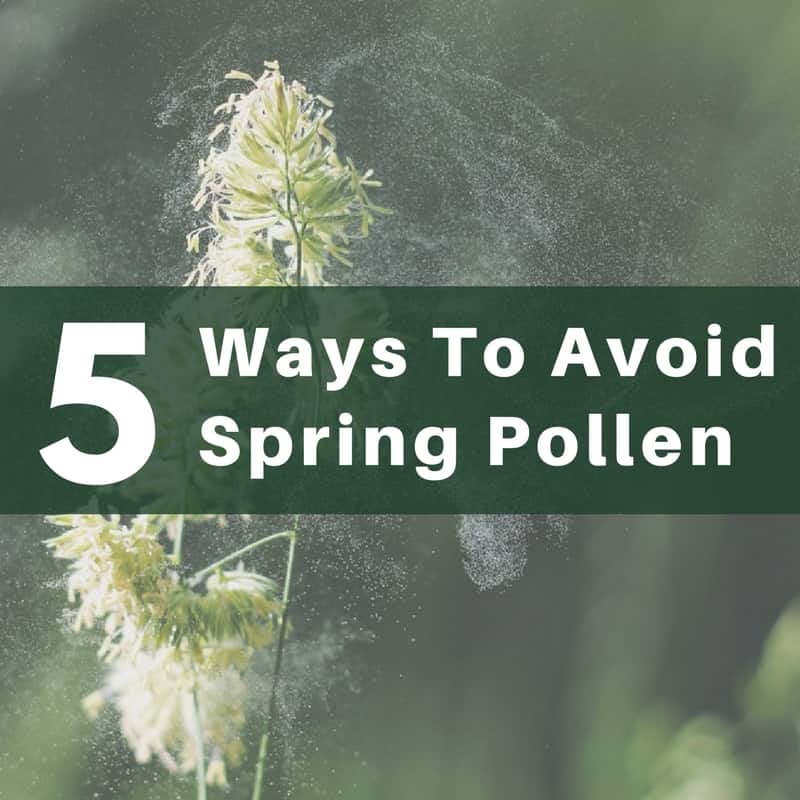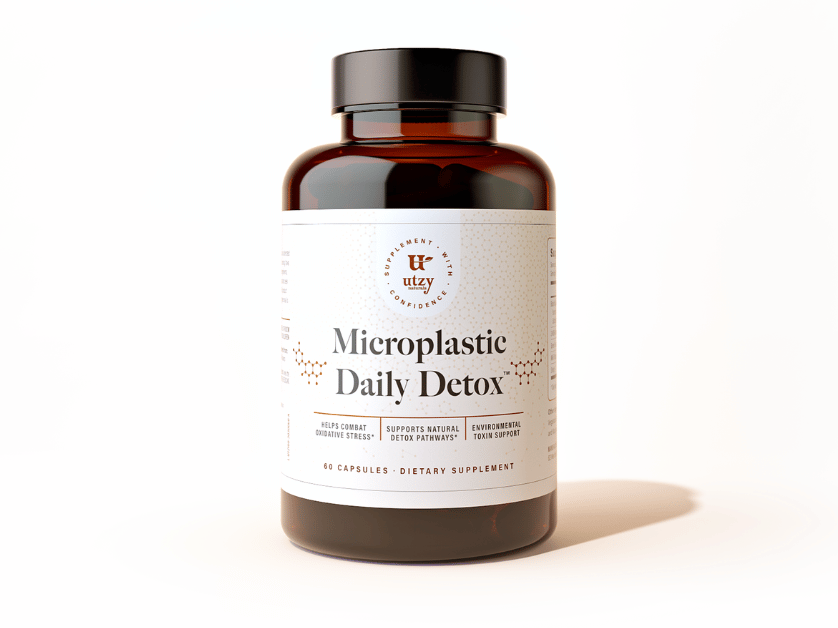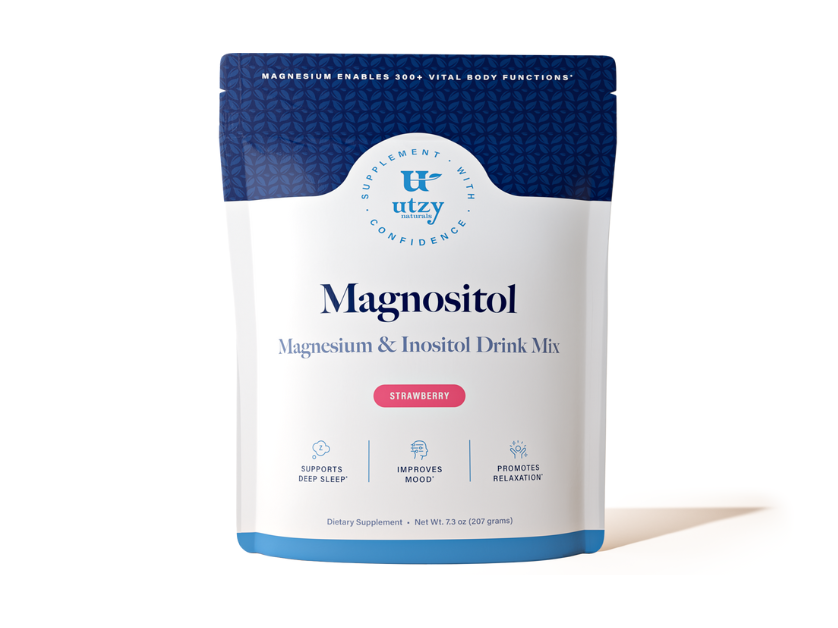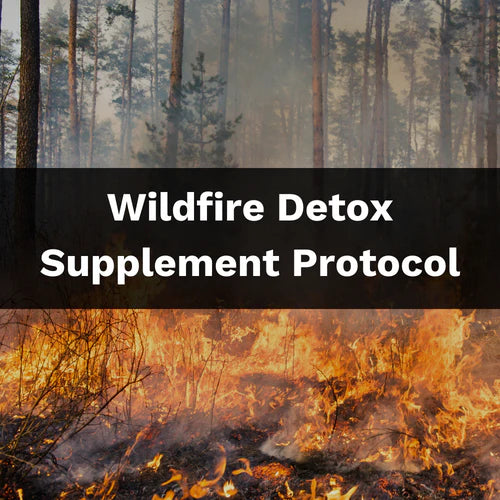Save up to 25% during our FRESH START Sale! SHOP NOW
Save up to 25% during our FRESH START Sale! SHOP NOW
shop
learn

How To Avoid Pollen During Spring
April 18, 2018 7 min read
Witnessing the transition from the dreary winter into the spring is almost always an uplifting experience. The spring and the warm relief that it brings is always something to look forward to after a tough few months of cold. However, this also means that you will now have to deal with the pollen that all those beautiful sprouting plants are beginning to release.
During this time, we are constantly bombarded with advertisements about how certain over-the-counter antihistamine drugs will solve all of our problems. Sometimes they do and sometimes they cause a whole new set of problems.
Instead of masking your symptoms with drugs, you could try to treat the root causes by avoiding the pollen that caused your problems in the first place.
Here are some useful tips about how you can deal with and avoid pollen during the spring season.

Spring is Tree Pollen Season
Many springtime sufferers do not even know exactly what type of pollen it is that they are reacting to. With so many different trees and plants out there, it can be tough to track down the main irritants.
A good rule of thumb to know is that springtime represents the time of year that trees and flowers spread their pollen. So if you find spring a particularly irritating period, then you can narrow your focus down to these two sources.
Typically, humans are not sensitive to the pollen of flowers. If they were, it still would not make much of a difference because the amount of pollen produced by flowers is such a small amount. In fact, flower pollen is minuscule in comparison to the amount that trees produce, which makes them the real culprits of ruining the spring time for some people.

Trees produce massive amounts of pollen starting from the end of February until as far as the beginning of May. The way that trees reproduce in nature is a little bit perplexing. Since they don’t move, they have to rely on the wind to blow their reproductive juices around to precisely the correct spot.
In simple terms, the male trees produce the pollen (which is equivalent to their sperm), and it is released into the wind so that, hopefully, it lands on the correct spot of a female tree. That spot is going to be the female tree’s ovary, which can also be recognized as their flower.
Once the small pollen grain reaches inside the flower, tree fertilization starts to occur. Then, a fruit develops from the flower and this can be considered the egg of the tree. Once fully developed, it drops off to spread its seeds into a new tree or the fruit hopes to be eaten so that its seeds are “excreted” with some essential nutrients to grow healthily with.
Trees produce trillions of little pollen grains, or tree sperm cells, to increase the chances that it will land on nearby female tree.
As you can probably already deduce, when pollen is released, most of the pollen ends up in places where it doesn’t belong, like on your car or in your nose.
The worst part about this entire experience? That exposure to these pollen grains triggers an overly aggressive immune response in hypersensitive people. This is a huge bummer for those individuals, especially during the spring season of warm renewal and vibrant color.
How To Avoid Tree Pollen During the Spring
The best way to avoid tree pollen during the spring season is to avoid exposure to the source as best you can. The type of tree that produces the highest quantity and most irritating pollen is the birch tree. Birch is commonly found throughout the United States, but especially on the east coast. It is also prevalent through western European countries.
If you have tree pollen issues, you should make yourself aware of what a birch tree looks like and make sure that you keep clear of any that are near your house or workplace. If you do recognize one from nearby, you can try your best to take a different route on your run just in case.
In reality, can we really avoid birch pollen if it is such a prevalent species? Realistically, taking a different route on your run is not going to completely stop exposure to the pollen. You are still going to come into contact with pollen from afar.
The best thing that you can do is to make those small changes that can add up together and really make a difference for improving your respiratory health during the spring season.

Keep Track of Pollen Counts
Thankfully, we live in an age where technology makes very difficult tasks much easier. We can easily monitor the current pollen levels in our area by checking an application that displays the results of local weather organizations’ efforts to track it.
You can choose from a multitude of apps on your phone to monitor pollen levels or go to pollen.com and use their very accurate system. This site is recommended by many medical professionals and its users seem to have an appreciation for it.
Some of these applications can get into detail for more of your benefit. You can choose to display pollen counts from different sources like birch, elm, spruce, flowers, grass, weeds, and other airborne allergens like mold and dust. You can even change the settings so that it sends you notifications about when a particular airborne contaminate is in high quantities in the air.
Check the pollen count in the morning before you go outside. That way, you’ll know if you will need to prepare for the high pollen risk. Then, you can bring emergency antihistamines, pack extra water or even a face mask to prepare for those high pollen days. It’s much better than being stuck in a fog all day, right?
Avoid Going Outside in the Middle of the Day
Levels of pollen in the wind fluctuate throughout different times of the day. You might notice that you sneeze less during the night time, when the pollen levels in the air are at their lowest. On those ridiculous pollen count days, the night time is definitely going to be the best time to go outside if you have to.
The worst time to go outside on these days is the middle of the day around noon when the sun is at its highest point in the sky. At this point in the day, the sun’s rays are its strongest. Therefore, photosynthesis is going to be faster at this point.

Along with other natural triggers, pollinating plants release more pollen grains into the air when the sun’s rays are strongest during the day. This is also true for cloudy days as well, but less pollen will generally be present in the wind.
Take Showers at Night (and Wash Your Sheets)
During the day, your skin and hair will collect an abundance of pollen even if you can’t see it or feel it. The same is true for your clothes. Pollen grains are extremely small, but their presence on your clothes and hair can still trigger reactions.

It is best to take a shower at night before you go to bed so that you wash off all the pollen that you collected during the day. You can slip into your comfy pajamas and rest easily without exposing your body to the leftover residue of the pollen.
It’s also a good idea to wash your bed sheets more often during the spring season as pollen residues can collect there over time.
Use a HEPA Air Filter
Using an air purifier in your home is an excellent choice and long-term investment for your family’s health. These devices have the ability to filter out airborne particles that are floating around in your home. It can eliminate mold spores, dust and seasonal pollen that can cause issues, even while indoors.
To make sure that your air purifier is actually doing an effective job as advertised, make sure that it is labeled as a HEPA air filter for pollen. The HEPA purification system is designed to capture small particles, specifically microscopic pollens and dust particles.

This type of air purifier should be what sensitive individuals are looking for. Any other type of air filter will likely just be ionizing the air, rather than actually eliminating harmful particles to make the indoor air healthier.
Try Using A Neti Pot
When you are going about your everyday activities and the pollen counts are very high, if you breathe through your nose, pollen residues can collect in your sinuses. If mucus isn’t able to do an effective job at eliminating the pollen, the residues could linger and cause increased amounts of inflammation.
You can assist your body’s immune system by making use of nasal irrigation. This involves the process of pouring water or saline solution through one nostril and out the other. That way, the water will push out excess pollen, dust, and congestion so your sinuses and nasal passageways can be moist and clear.

If you suffer from seasonal troubles and a stuffy nose is troublesome for you, definitely try nasal irrigation. An ancient remedy uses the neti pot for clogged nose, which is like a little teapot with a spout specifically designed to flush your nasal passageways.
When you use a neti pot at first, you might be a little bit anxious. You need to resist the urge to breathe while you are pouring the water through, but that’s basically the only minor challenge.
After you get the hang of it, the process is very liberating and makes you feel amazing during high pollen count days. If you are a beginner, you could try a saline nasal spray designed for this purpose, but without the risk of choking on water if you accidentally breathe.
Bottom Line for Avoiding Spring Pollen
If you suffer during the spring time and you find yourself wishing that it were winter again, don’t be discouraged. Using natural methods is your best long-term decision. Remember, it all starts with a focus on reducing your pollen exposure. Hopefully these tips will set you off with a few foundational perspectives about how to be innovative in avoiding pollen this spring season.

Leave a comment
Comments will be approved before showing up.
Also in Health
Subscribe
Sign up to get the latest on sales, new releases and more …
Join the Utzy Naturals Club!
Sign up and get the latest on sales, new releases, and more...






